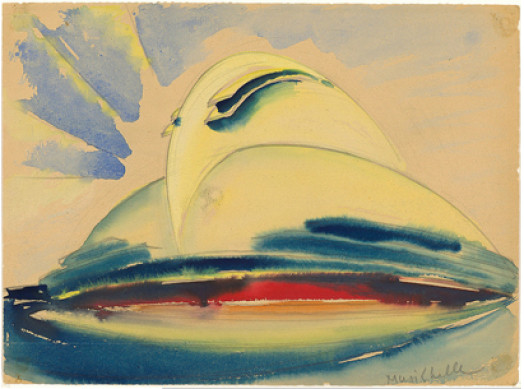Hans Scharoun in den USA
On display in SA+P’s Wolk Gallery from April 3 – August 15, Hans Scharoun: Architect and Visionary focuses on the graphic art of Hans Scharoun (1893-1972), known today for architecture of profound humanism and expressionism.
Extending from his earliest preserved drawings from 1908 to graphics for posthumous projects, the exhibit includes rarely-seen visionary and expressionistic watercolor renderings from the 1940s.
Having gained recognition for his house designs at the German Werkbund exhibitions of 1927 and 1929, Scharoun’s practice before WWII focused on residential projects, the most successful of which were the Siemensstadt Housing Estate in Berlin (1930) and the Schminke House at Löbau in Saxony (1932). With Walter Gropius, Hugo Häring, Ernst May and others, he was a member of the modernist architects’ association ‘Der Ring’.
Appointed City Architect of Berlin in 1946, he was instrumental in the post-war reconstruction of the city. His approach valued the continuity of buildings with their surroundings and a decentralized urban landscape, in sharp contrast to the over-scaled monumentality that had dominated Berlin planning under National Socialism.
During the 1950s, he designed several highly influential buildings including the Romeo and Juliet Apartments (Stuttgart, 1954-59) and the Scholl School (Lünen, 1956-62), but his most famous building was the concert hall of the Berlin Philharmonic (1956-63).
Recognized as one of the world’s finest halls, the Philharmonic is distinguished by an unconventional geometry, immersive acoustics and a fluid interplay of space that breaks down traditional barriers between listener and performer. Under construction at the same time as the Berlin Wall, the Philharmonic and its un-hierarchical plan came to symbolize humanistic and democratizing ideals at the height of the Cold War.
The Wolk exhibit was organized in collaboration with the Akademie der Künste Berlin, the primary archive of Scharoun’s work; all of the drawings on view are presented as digital surrogates made from the academy’s collections.
